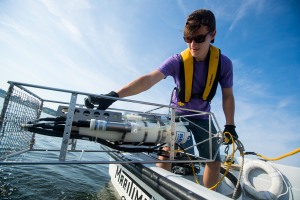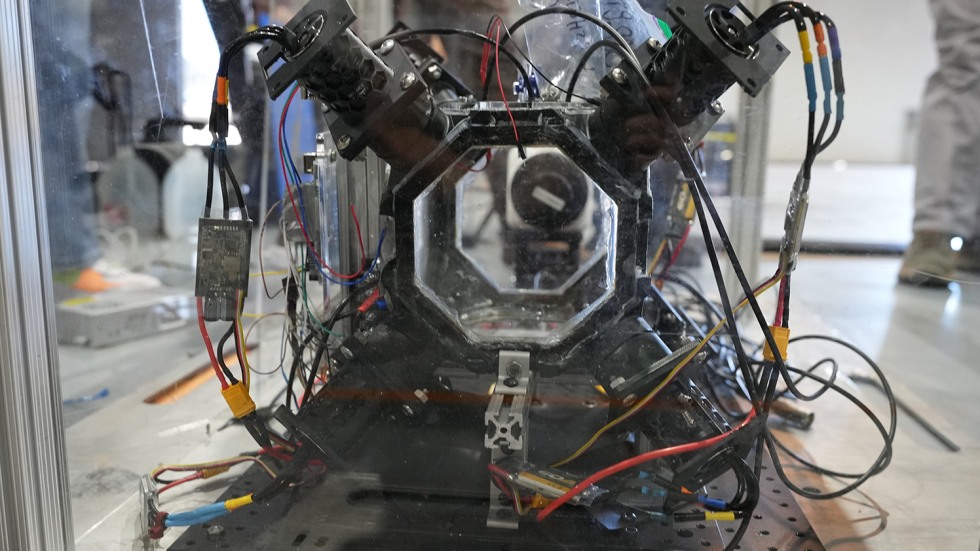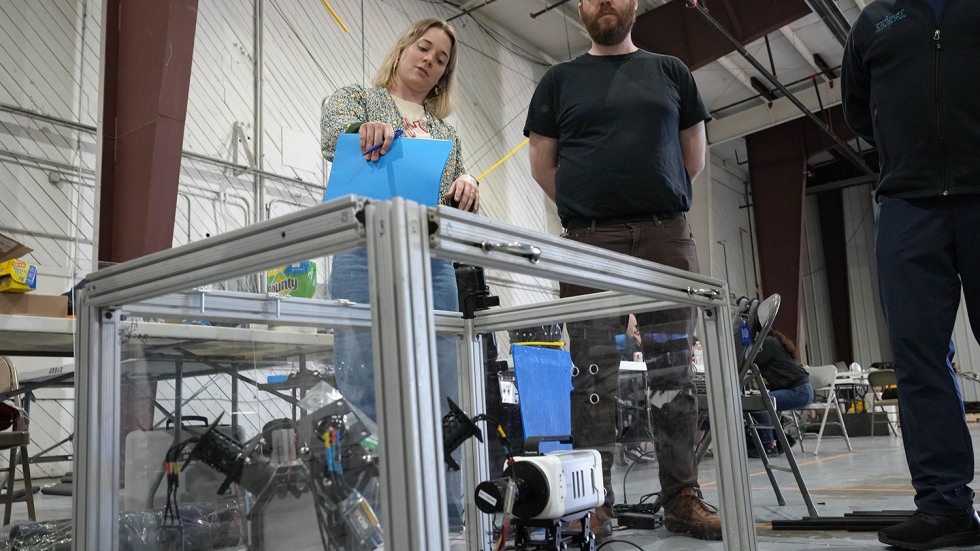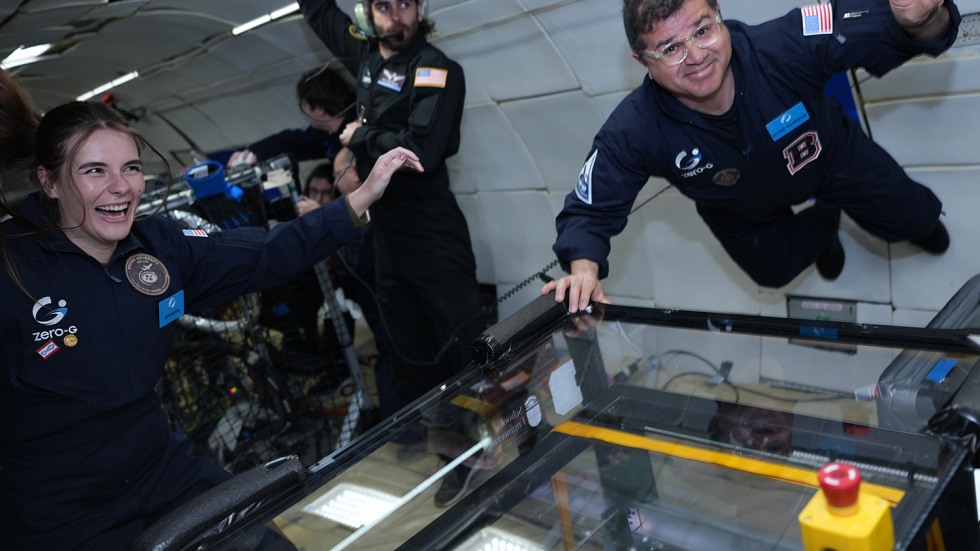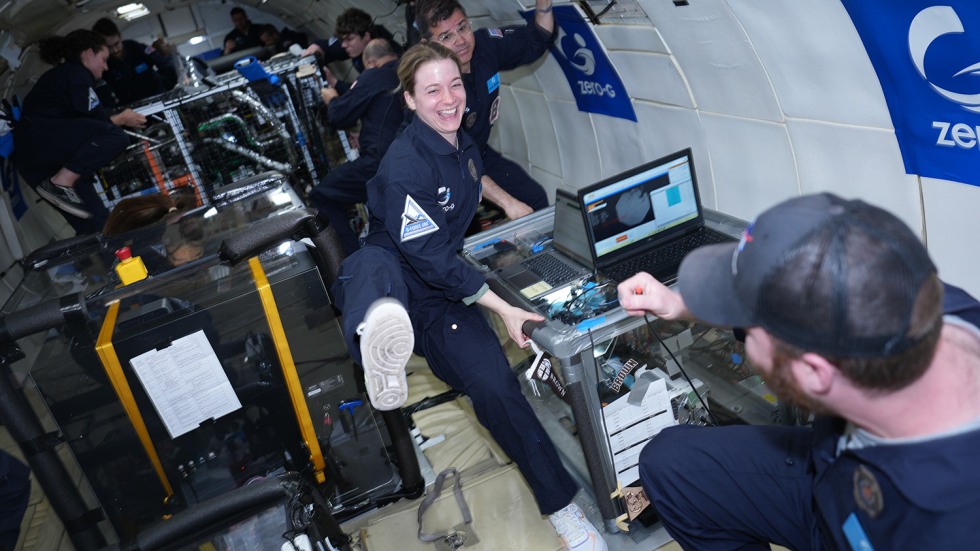PROVIDENCE, R.I. [Brown University] — Imagine designing and building a one-of-a-kind scientific device capable of performing precisely controlled, fully self-contained experiments while meticulously recording the results — then chucking that custom-made labor of love down an eight-story elevator shaft.
Welcome to the scientific life of Madeline Federle, a Ph.D. candidate in Brown’s School of Engineering. Federle has spent this summer analyzing data from a unique — and occasionally terrifying — set of experiments aimed at better understanding the dynamics of bubbles.
The types of bubbles Federle is interested in are not the ones on soapy dishes, but the kind that form in biphasic flows — two substances in different phases, like water and air, moving together. Understanding the dynamics of these bubbles is important in innumerable industrial processes, nutrient cycling in oceans, and myriad other settings. But Federle is particularly interested in what happens to bubbles in a very specialized setting: space.
“We have very little understanding of how bubbles move around in a fluid in microgravity,” Federle said. “So, where bubbles go and how we control them become really important questions.”
Those questions, she says, are relevant for everything from drinking-water systems in crew cabins to the behavior of liquid fuels used for propulsion. And to answer them, Federle not only needs to design experiments that interrogate bubble dynamics, but she needs ways of getting those experiments into zero gravity.
That’s where her custom-made device — and the elevator shaft — come in.
